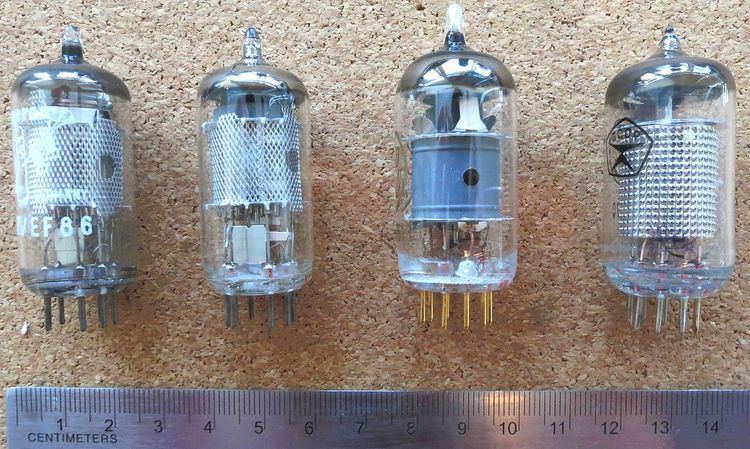Classification Pentode Cathode type Indirectly Heated Filament current 200 mA | Service Audio Frequency Filament voltage: 6.3 V RMS or dc Max dissipation Watts 1 W | |
 | ||
The EF86 is a high transconductance sharp cutoff pentode vacuum tube with Noval (B9A) base for audio-frequency applications.
Contents
It was introduced in the late 1950s and was produced by Philips, Mullard, Telefunken, Valvo, and GEC among others. It is very similar electrically to the octal base EF37A and the Rimlock base EF40. Unlike many pentodes it was designed specifically for audio applications, low noise and low microphony being claimed advantages, although a rubber-mounted vibration-resistant base was still recommended. It has much higher stage gain than any triode, which makes it susceptible to microphony. The EF86 was used in many preamplifier designs during the last decades of vacuum tube hi-fi development. An industrial variant of the tube is known as 6267. In the former Soviet Union a variant was also produced as type 6Zh32P (Russian: 6Ж32П.) As of 2012 EF86s were being produced in Russia in two versions under the Electro-Harmonix brand and in the Slovak Republic as JJ Electronic (formerly Tesla).
Characteristics
6.3 Volt, 200 mA indirectly-heated A.F. miniature pentode with Noval (B9A) base with an EIA 9CQ (or 9BJ) basing diagram.
Special precautions have been taken in the design to reduce:
The EF86 is much less noisy than other pentodes, but slightly noisier than some triodes at about 2 µV equivalent input noise to 10 kHz. Although used in circuits such as tape recorder input stages and instrument amplifiers, microphony can be a problem, even when mounted in a vibration-reducing valve holder.
Equivalent and similar devices
Special quality:
Different heater requirements:
The rarely used EF83 is a remote-cutoff pentode otherwise similar to the EF86; the remote cutoff (variable mu) makes it suitable for applications such as automatic gain control (agc) in tape recorders.
